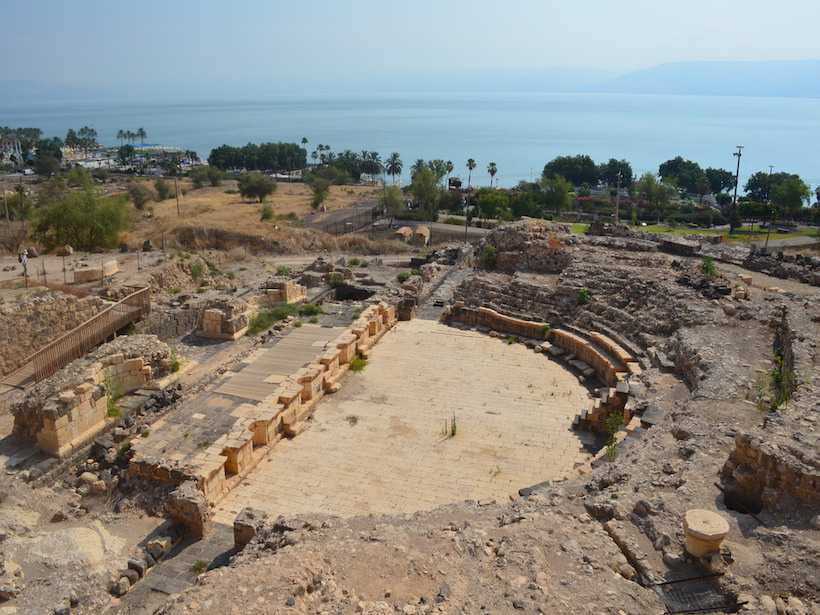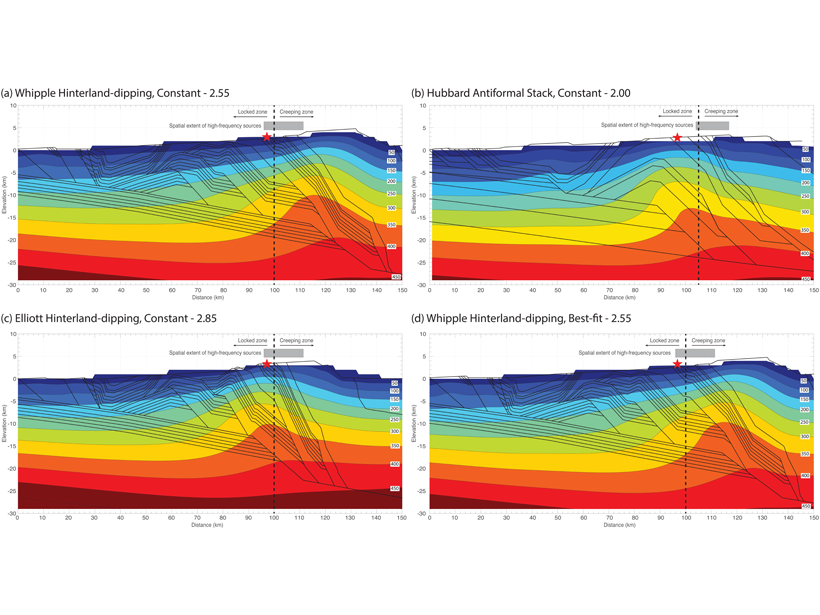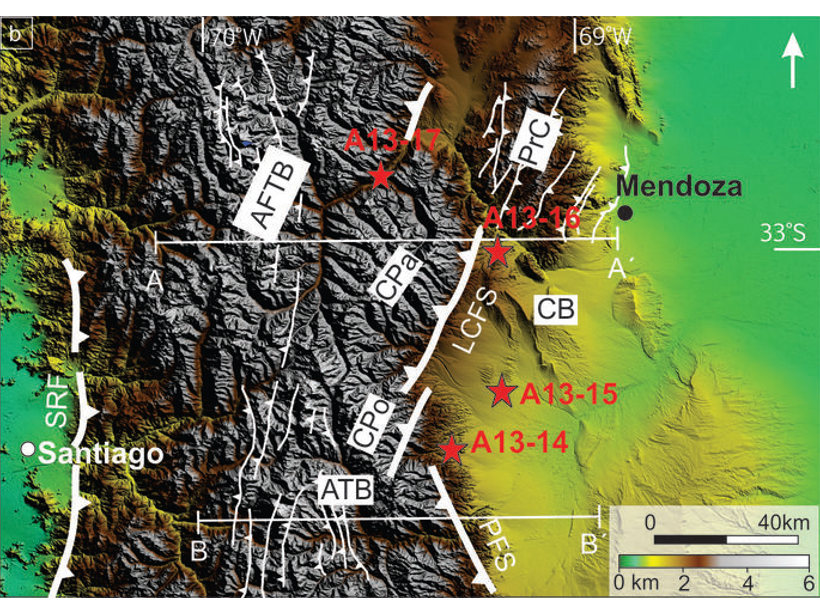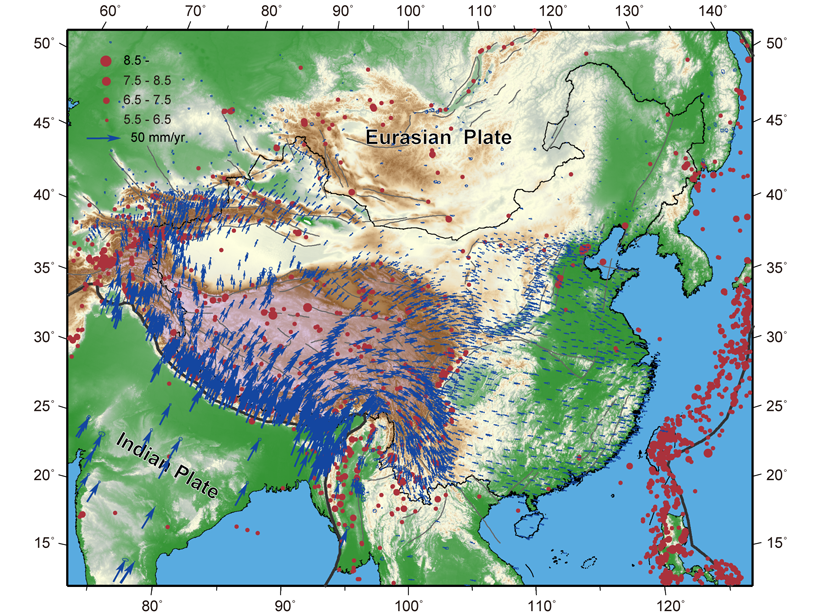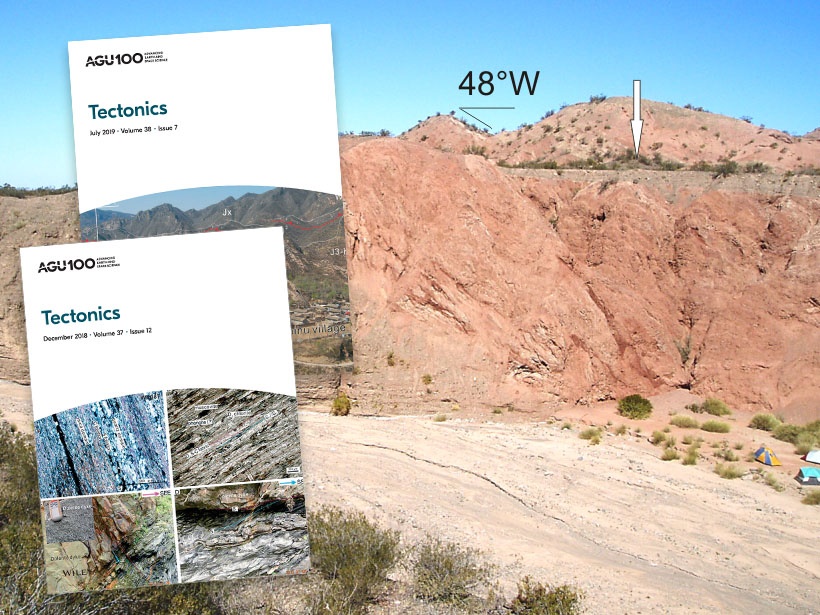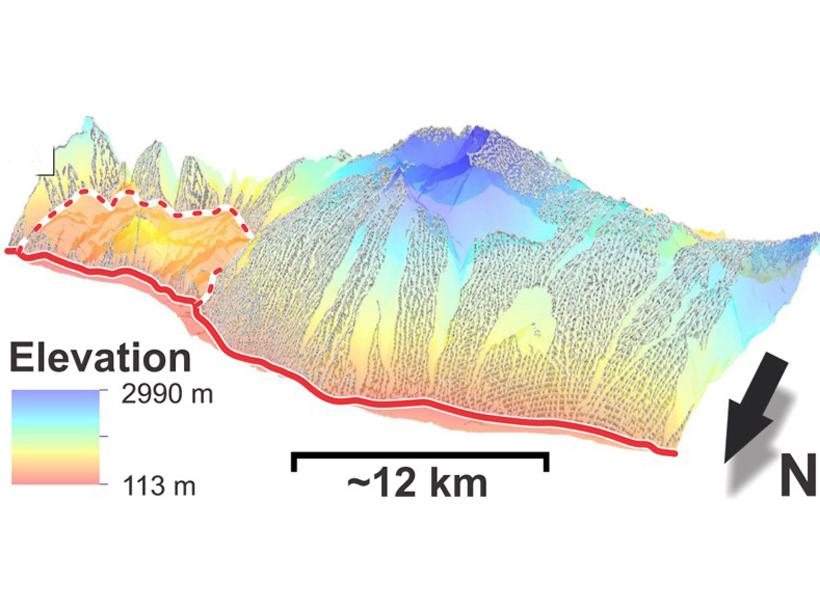How do greenhouse gases and water circulate from minerals deep below Earth’s surface into the atmosphere and oceans—and then back again? Our understanding continues to evolve.
Tectonics
By Land or Sea: How Did Mammals Get to the Caribbean Islands?
A multidisciplinary team is jointly investigating mammal evolution and subduction dynamics to unravel how flightless land mammals migrated to the Greater Antilles and other Caribbean islands.
Ancient Ruins Reveal 8th Century Earthquake in Sea of Galilee
Research into past seismic activity shows northeast Israel is still vulnerable to large quakes.
Deconvolving What Lies Beneath the Himalaya
A new study that combines constraints from the 2015 Gorkha earthquake, forward models of deforming crust, and thermochronology data gives new insights into the structure of the Himalaya.
What Controlled the Growth of the Southern Central Andes?
Flat-slab subduction appears to have played a minor role in the growth of the Southern Central Andes, with evidence for eastward migrating deformation.
Land Motion Offers Insights into Cascadia Earthquake Cycle
Comparing recent GPS data with a longer record of sea level along the western coast of North America allows researchers to home in on interseismic deformation above the Cascadia megathrust.
Space-Based Data Expand Understanding of Crustal Deformation
Researchers used the largest GPS data set yet to examine deformation of the crust across continental China and its implications for tectonic activity.
Editorial Handover at Tectonics
The outgoing and incoming Editors in Chief of Tectonics reflect on recent years of growth and expansion in the journal while they ponder and plan for the challenges ahead.
New Volcanic Complex Found Below the Southern Tyrrhenian Sea
Researchers have identified a previously unknown volcanic-intrusive complex that originated through the melting of mantle material at the northern edge of the Ionian slab.
Low-angle Normal Fault in Papua New Guinea is Rolling Along
Geologic and geomorphic observations of an active low-angle normal fault reveal a rolling-hinge mechanism accommodating the exhumation of a metamorphic core complex in Papua New Guinea.



